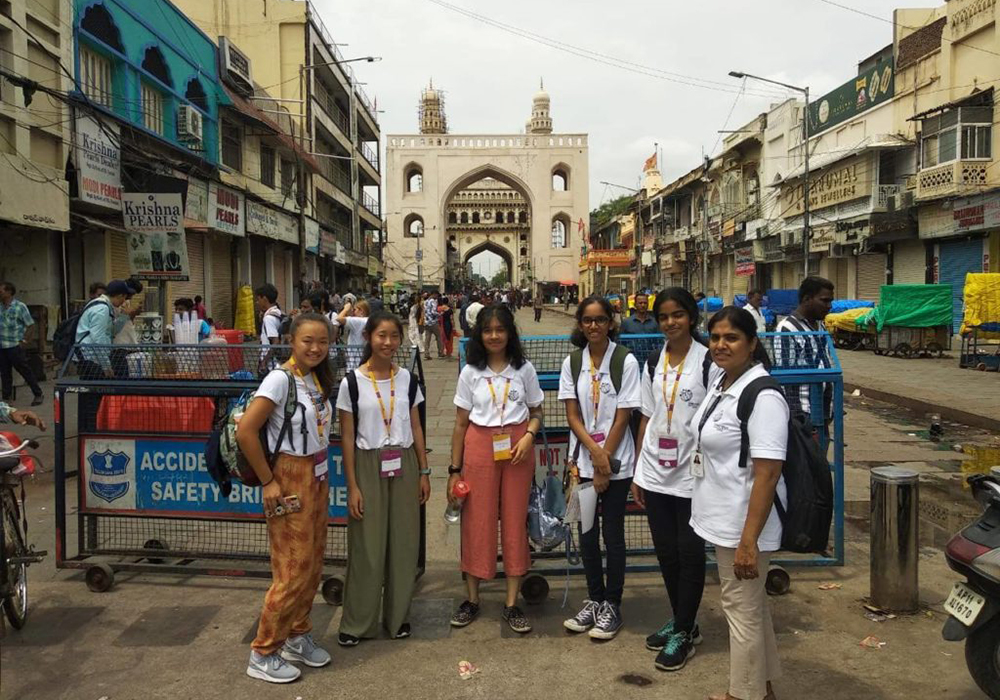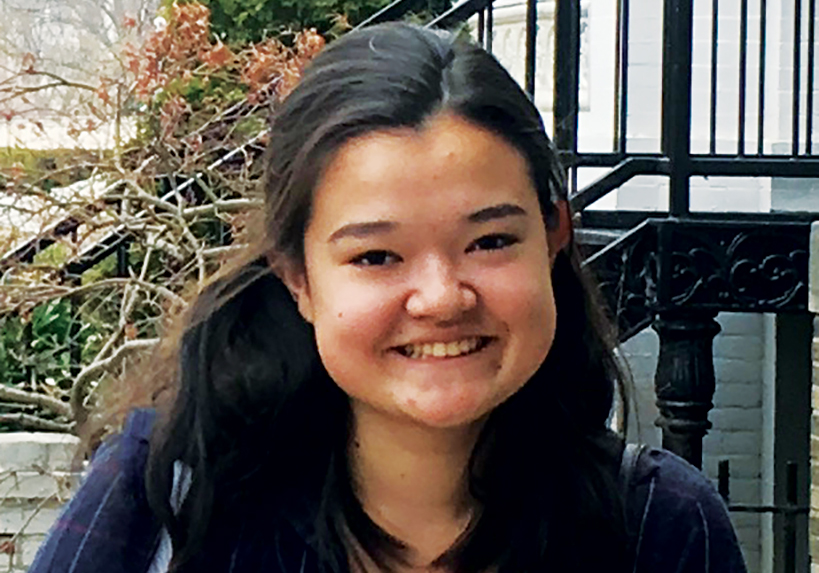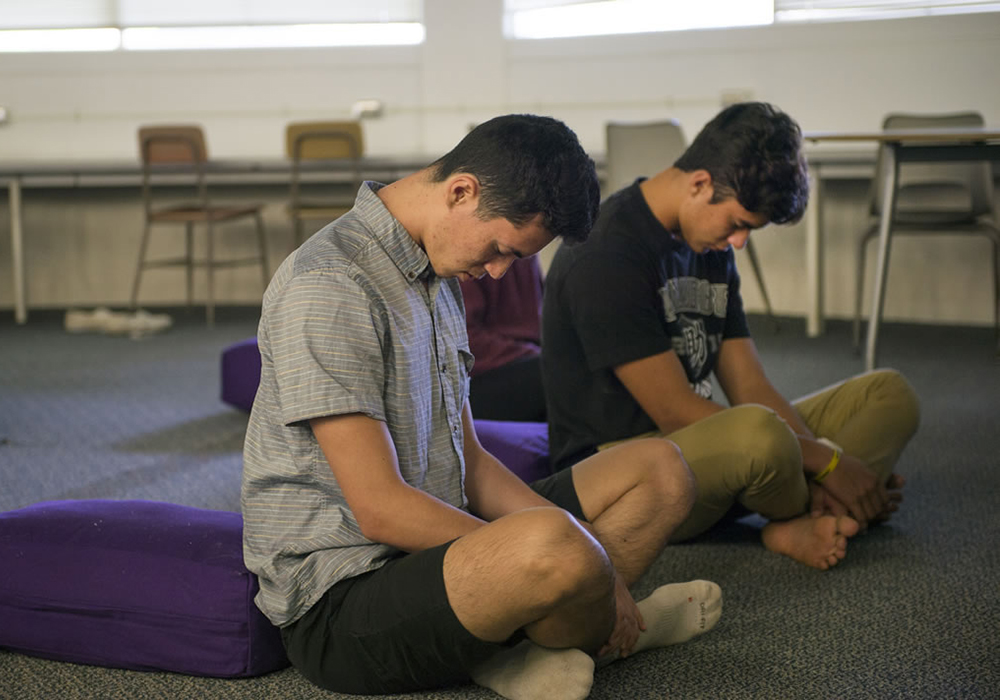
Rachel Breitweser ’03
Are you feeling stressed? Exhausted? Anxious? Overwhelmed?
If you answered yes, you’re not alone. Everyone needs some time and space to recuperate from life’s stresses, and students are no exception.
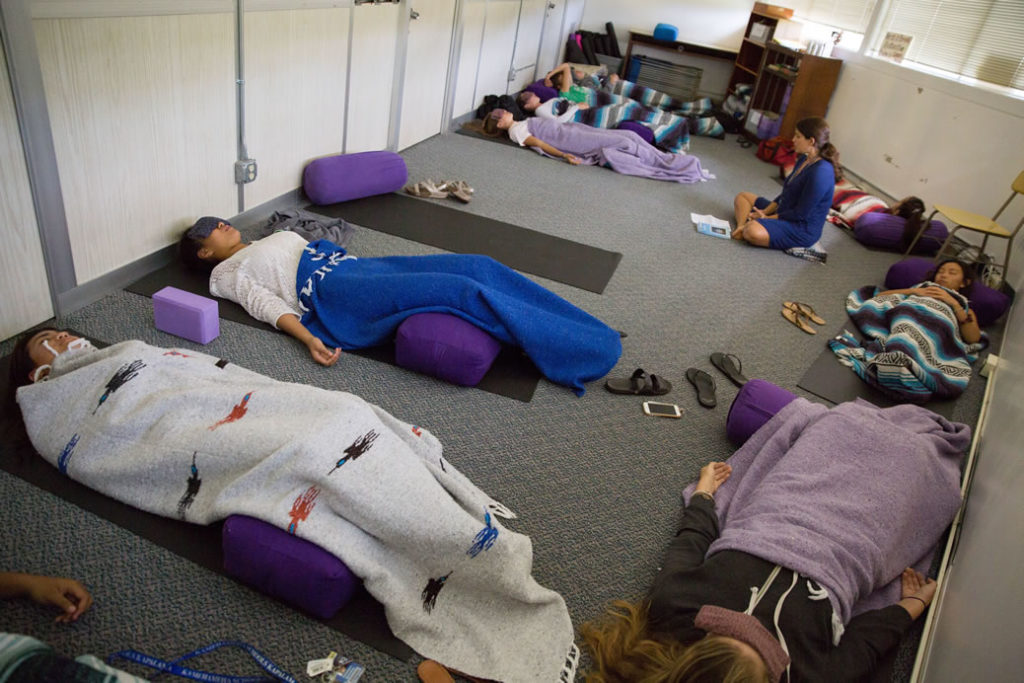
The Restorative Studio, located in the Learning Commons in Cooke Library, is just the place for students, faculty and staff to take in some rest and relaxation. Started as a prototype based on an articulated need for restorative and healing activities, the studio now hosts a regular schedule of sessions.
“Learn how to calm your body, mind and spirit through guided breathing and meditation sessions,” reads the sign hung outside the door. The space is filled with yoga mats, blankets, various cushions and bolsters, eye pillows and essential oils, while soft instrumental music plays, setting a peaceful atmosphere.
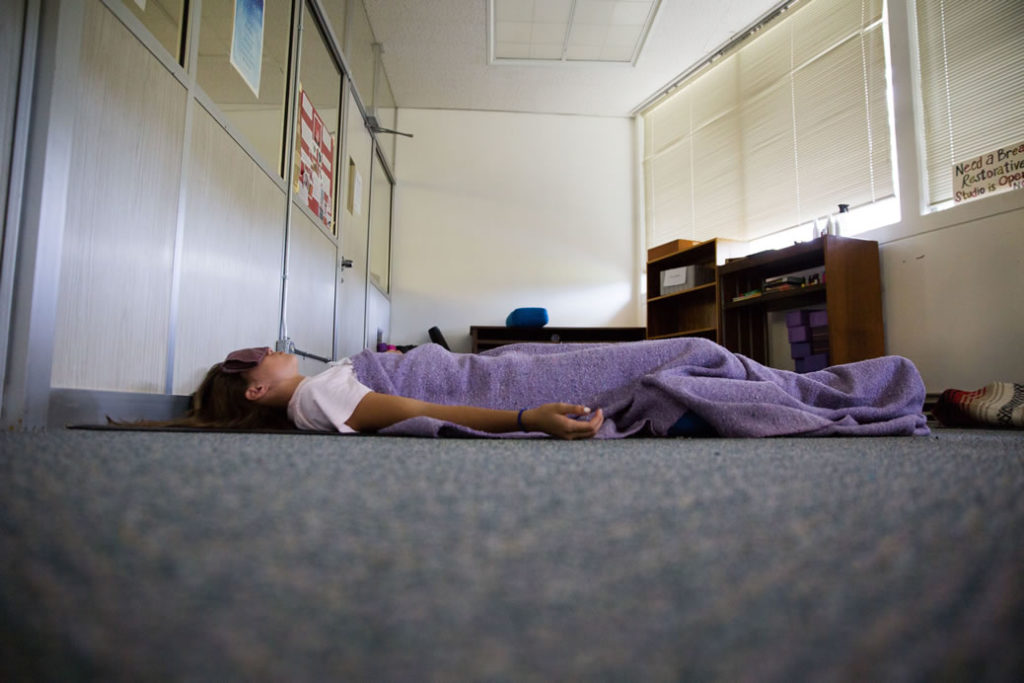
Students are welcome to use the studio for silent reflection or self-guided meditations that they can follow on iPods. The most popular attraction in the studio are the 20-minute yoga nidra sessions. There’s no experience needed to practice this type of deep relaxation.
With students reclining comfortably in supported yoga poses, faculty members guide them through a meditation designed to encourage mindful awareness. “Please bring your awareness to your right shoulder, right elbow, right wrist,” the script goes, guiding students to move their attention throughout 61 points on their bodies.
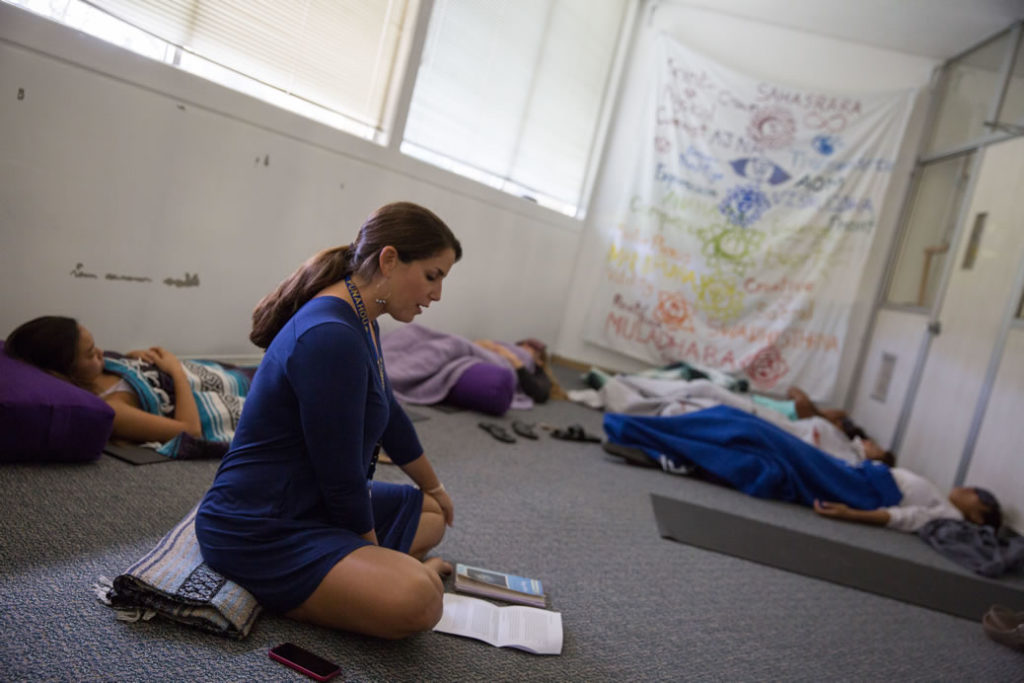
Paula Crabb, Academy physical education teacher; Sarah Slater, Academy psychosocial department head; and a growing list of additional teachers lead these classes. “In addition to promoting relaxation, yoga and meditation help students gain a stronger awareness of themselves on a physical, mental, emotional and spiritual level,” Slater commented.
Not only does this type of internal reflection give students the opportunity to slow down, but it can also change the body and brain, leading to less fear, stress and anxiety, and increasing concentration and focus. “Like other forms of meditation, yoga nidra works by activating the body’s parasympathetic nervous system, which is a branch of the autonomic nervous system that controls the ‘rest and digest’ response of the body,” Slater explained. “Studies show that one hour of yoga nidra is as beneficial as four hours of conventional sleep.”
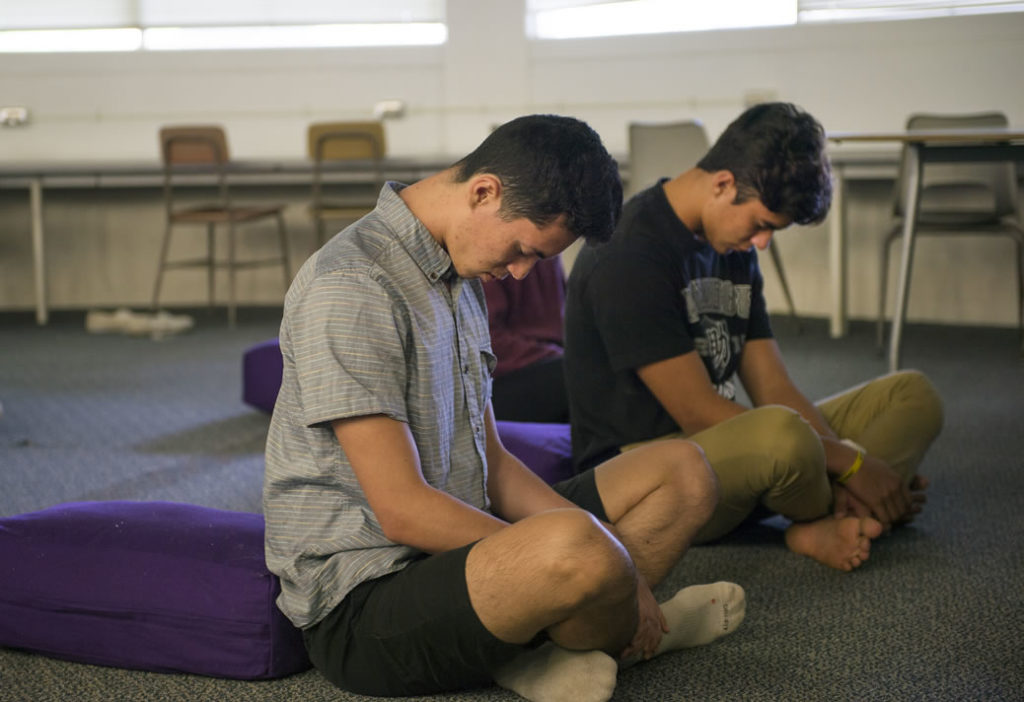
Sometimes during the nidra sessions, faint snoring can be heard over the calming melodies and soothing voice of the teacher. While cultivating a relaxed sense of awareness rather than falling asleep is a goal of yoga nidra, Crabb and Slater take comfort in the fact that students are adopting the studio as a place to take refuge and recalibrate during a busy school day.


